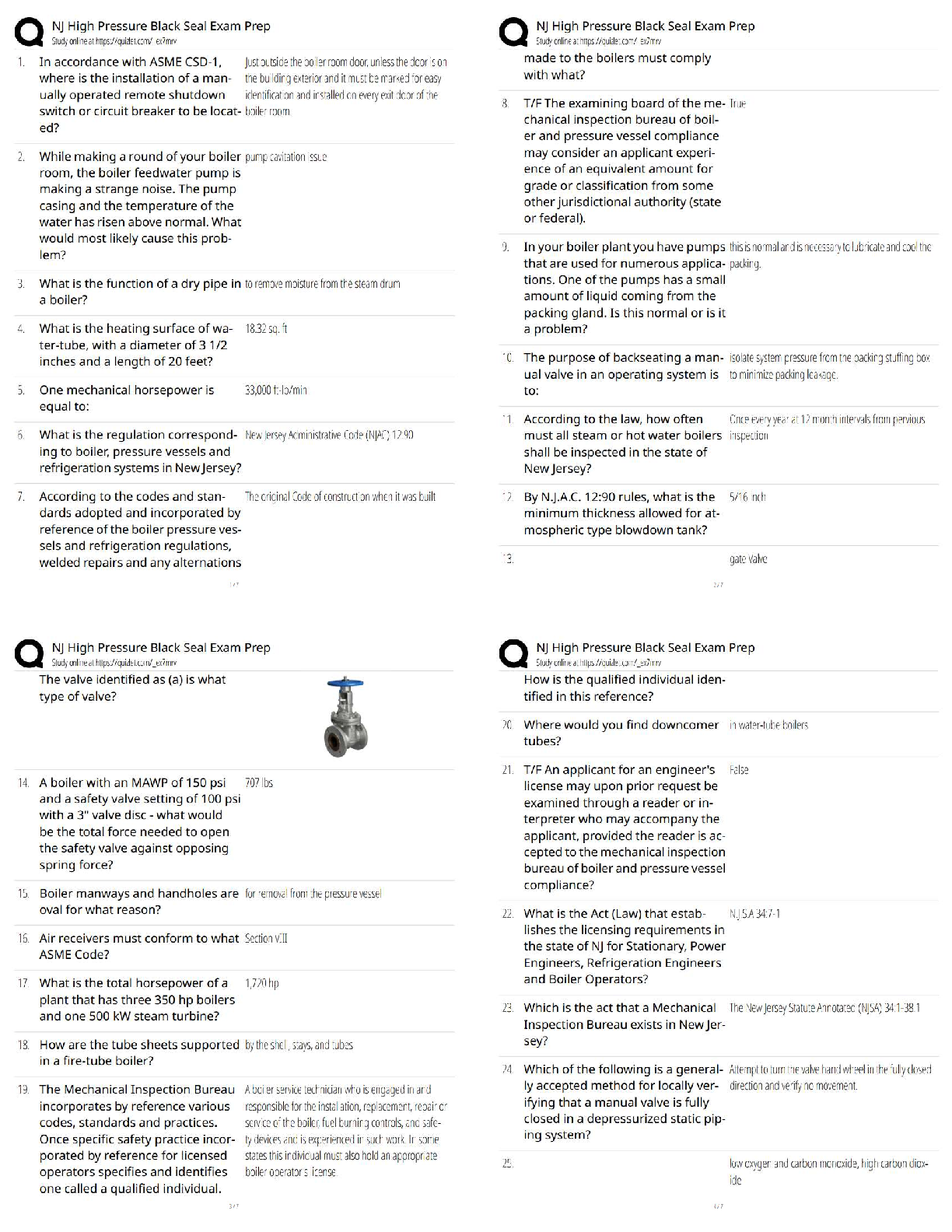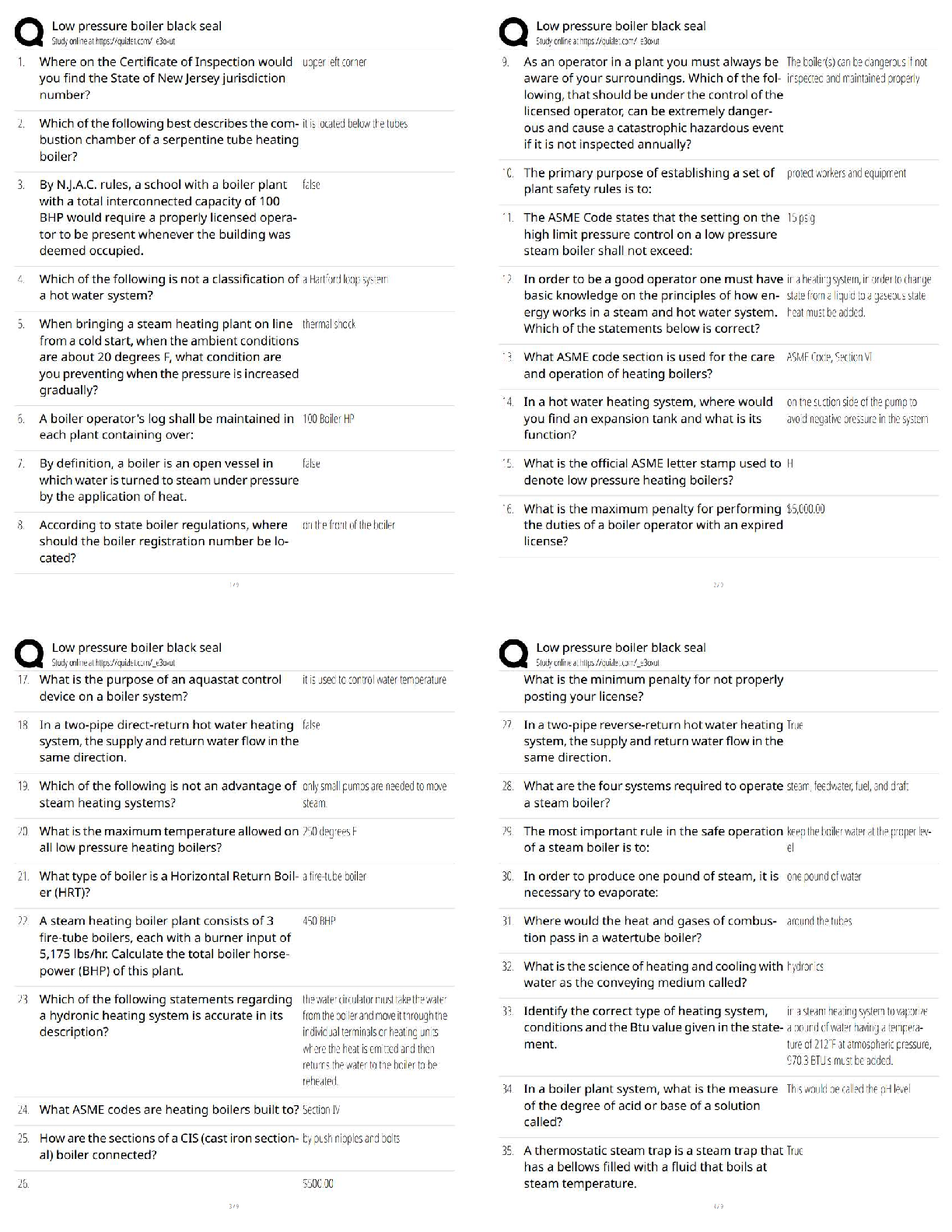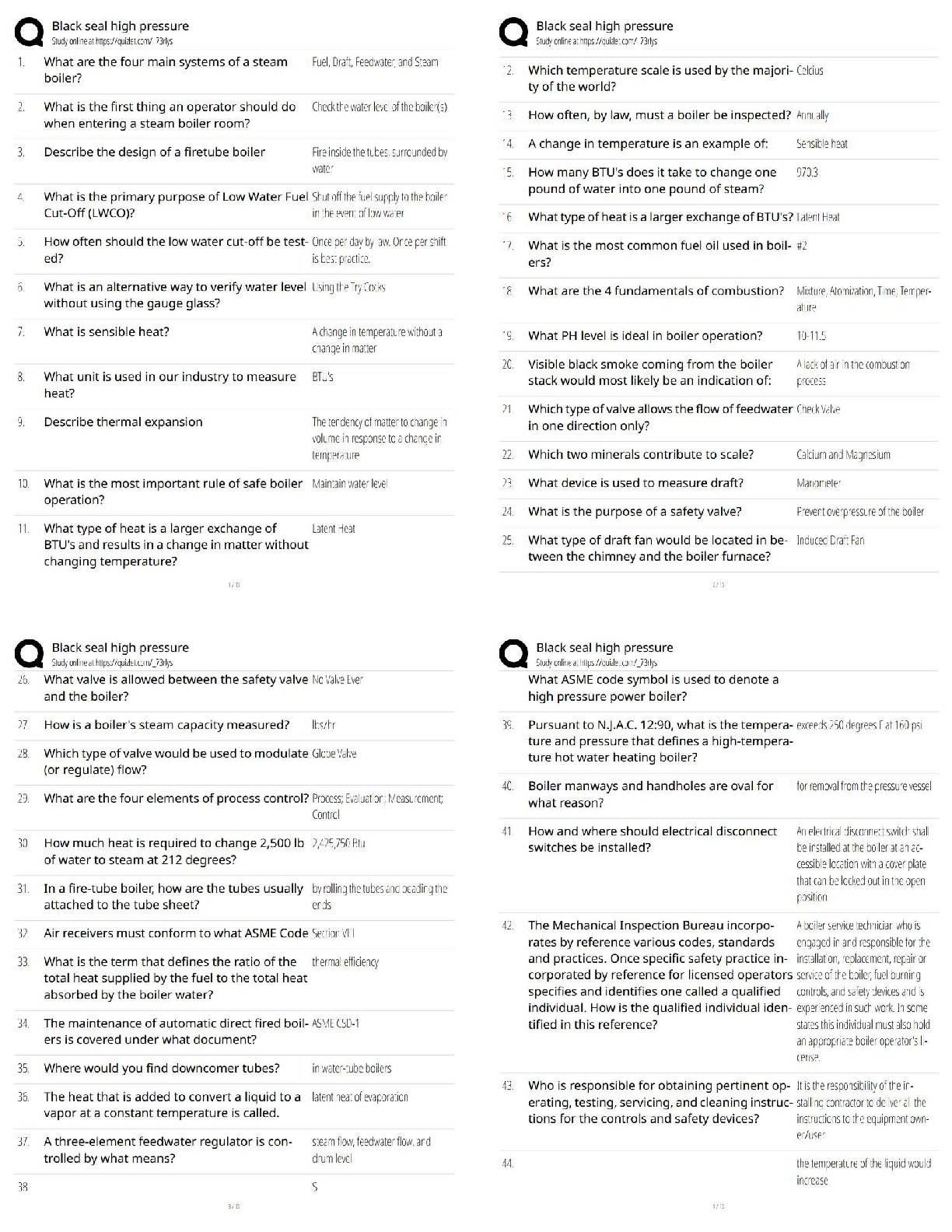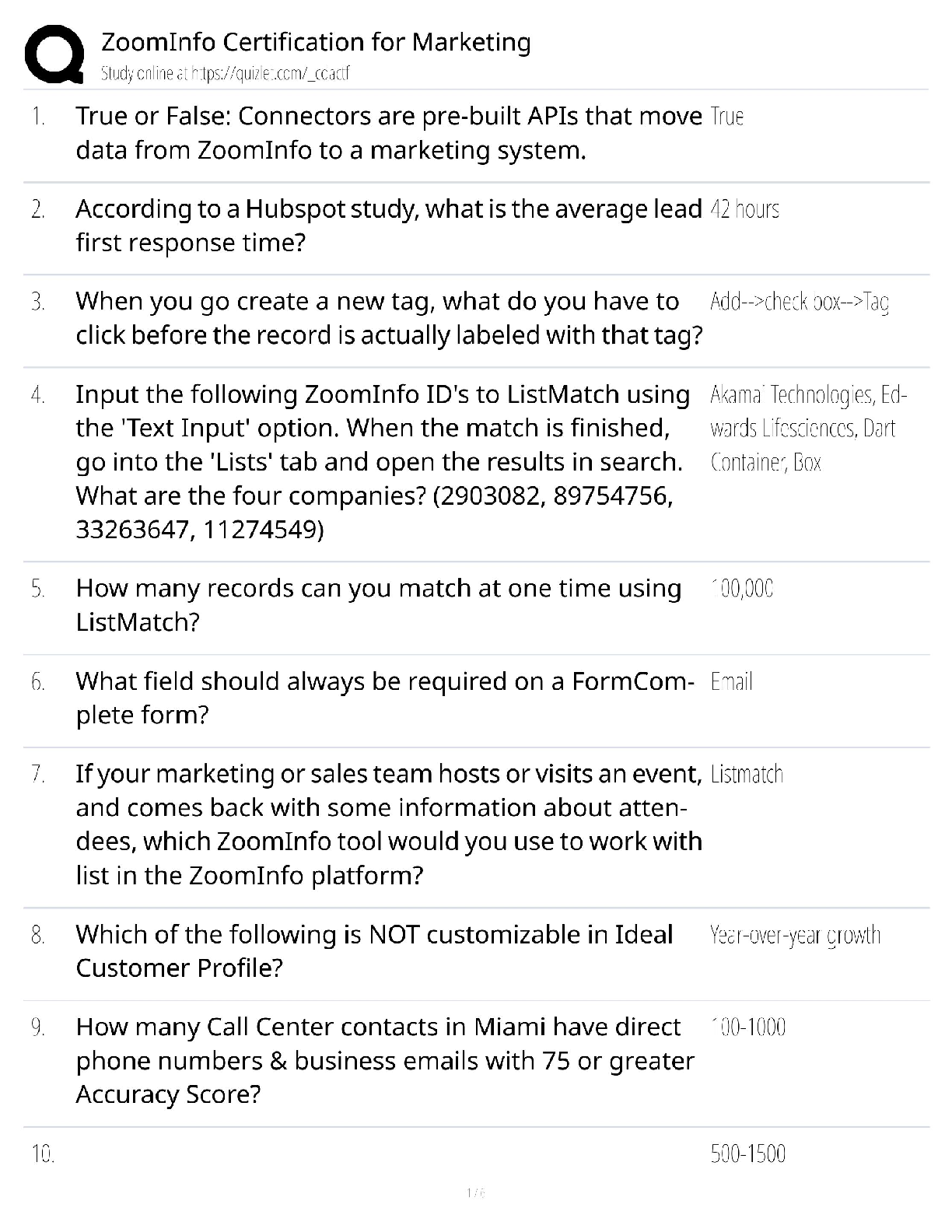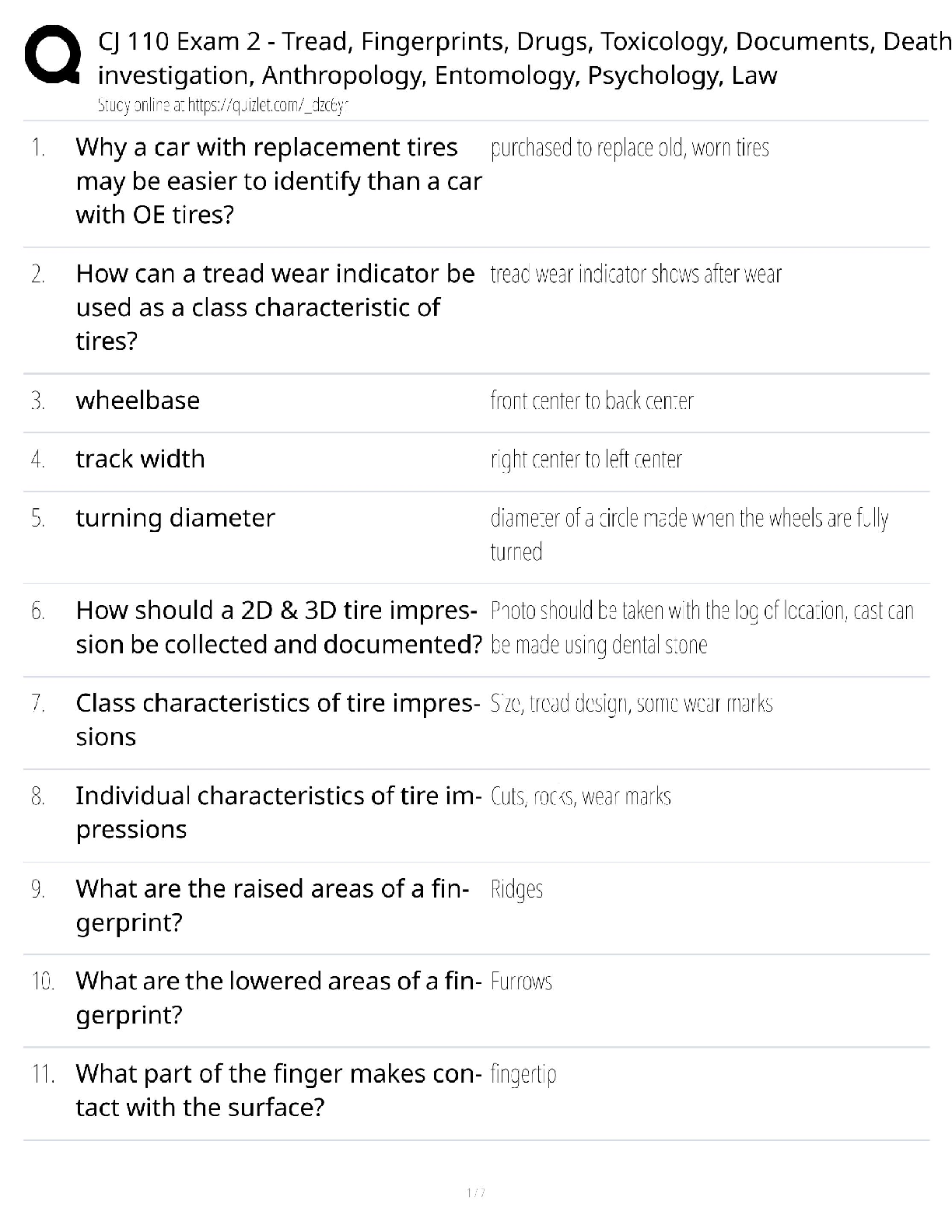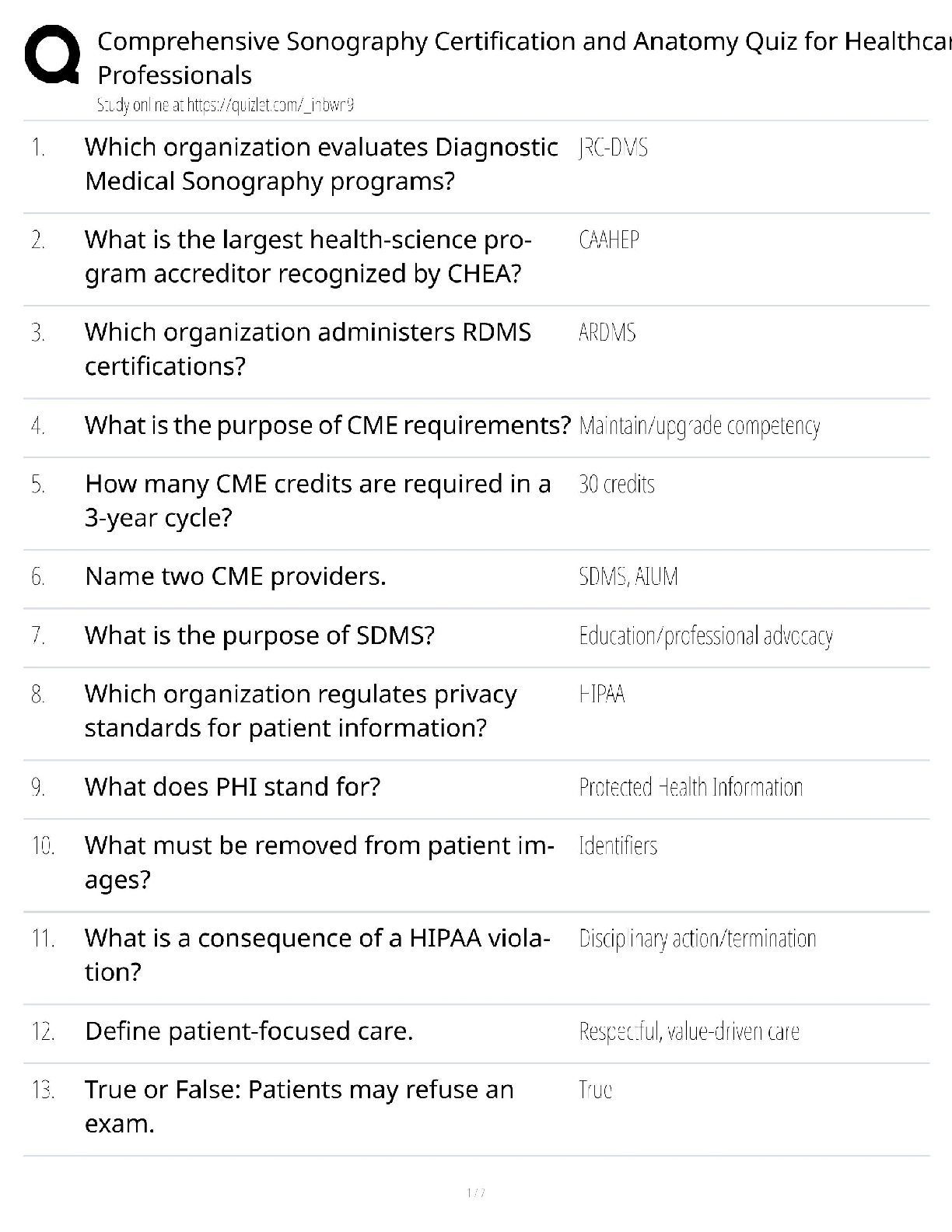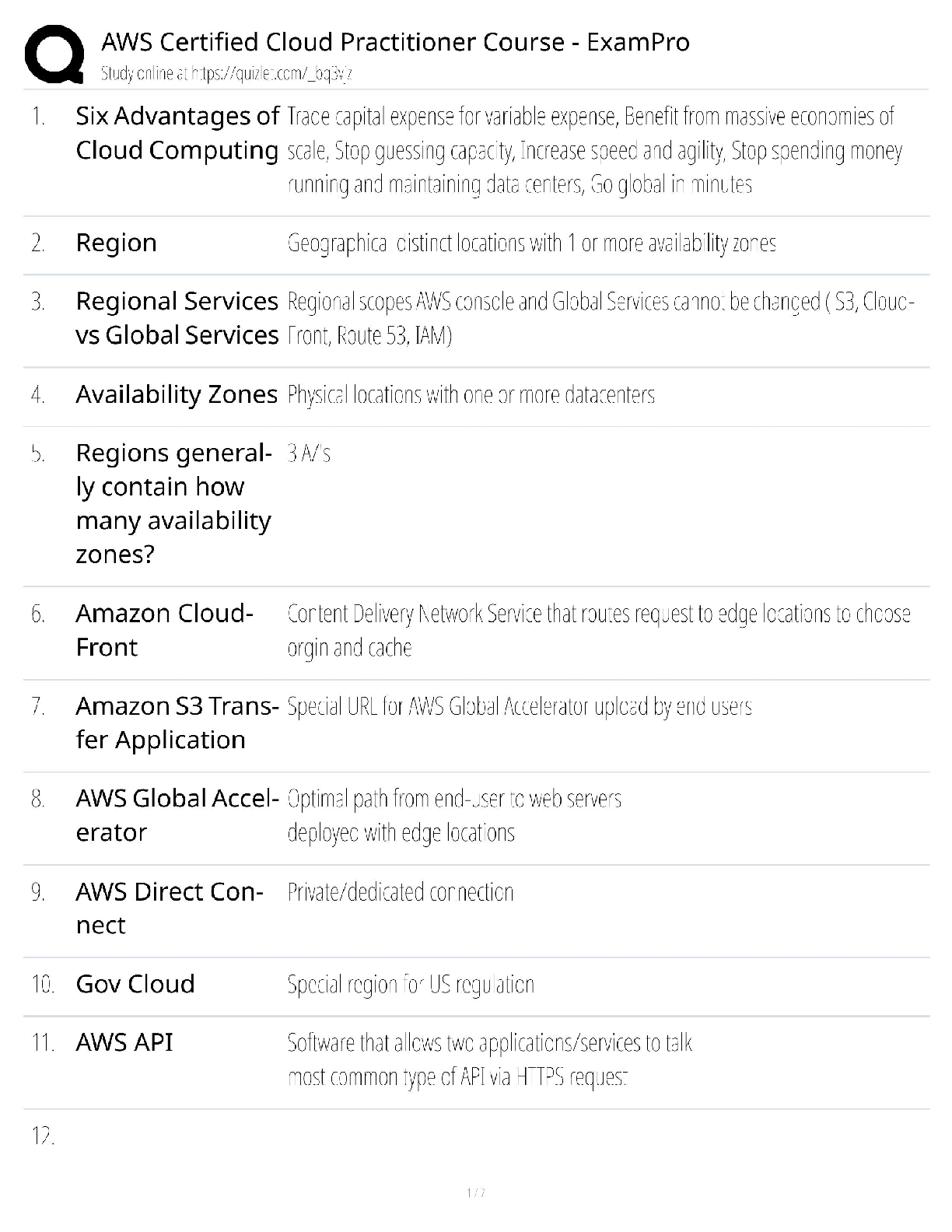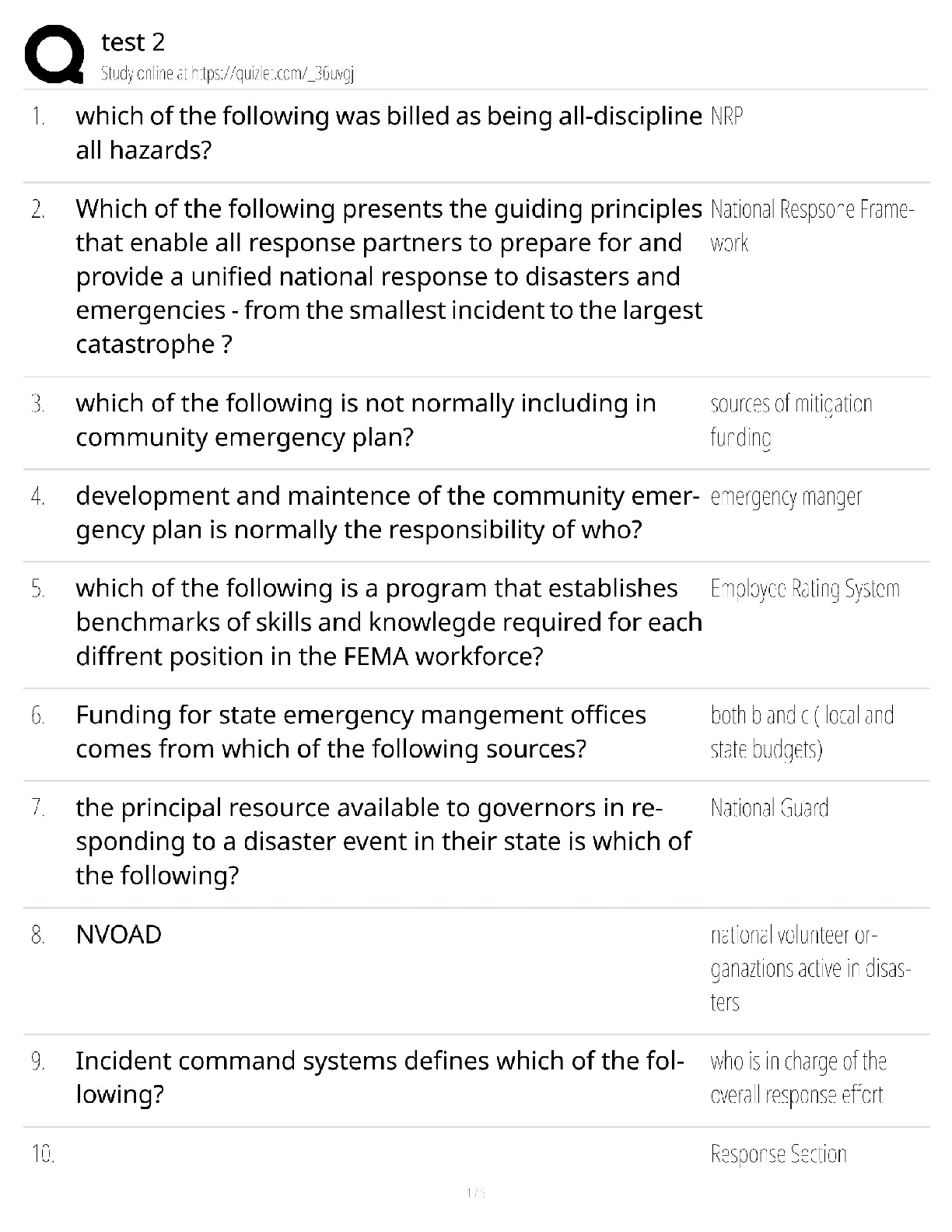Biology > QUESTIONS & ANSWERS > Questions and Answers > University of Washington - BIOL180 Worksheet_Phylogenies_key (All)
Questions and Answers > University of Washington - BIOL180 Worksheet_Phylogenies_key
Document Content and Description Below
1 Phylogenies KEY Biology 180 In the table below, a “1” indicates that the organisms (left) have the trait (top); “0” indicates they do not. So lizards have limbs, but ray-finned fish do n ... ot. jaws limbs amniotic egg fur & lactation scales with keratin lizards 1 1 1 0 1 ray-finned fish 1 0 0 0 0 mammals 1 1 1 1 0 lampreys 0 0 0 0 0 snakes 1 0* 1 0 1 amphibians 1 1 0 0 0 * Some snakes have vestigial hindlimbs as embryos or as adults. Let’s use these data to hypothesize the relationships between the organism groups. (This is called a “phylogeny”.) To do this, we assume that shared traits are due to common ancestry—in phylogenetic terms, they are homologies. 1. Only lizards and snakes have scales with keratin. We assume, then, that lizards and snakes derive from a common ancestor that had scales with keratin, and nothing else derives from that ancestor. We can start our phylogeny by connecting lizards and snakes and showing that “scales with keratin” must have evolved on the branch leading up to the lizards/snakes split. We’ve done this for you. ☺ 2. Now look at the amniotic egg column. Note that only lizards, mammals, and snakes have this trait. Use this information to add mammals to your phylogeny, and add an “amniotic egg” label to show where the trait evolved. (Practice your phylogeny terms: The amniotic egg is a synapomorphy that defines lizards, snakes, and mammals as a monophyletic group.) 3. Using the table, find synapomorphies that will allow you to add ray-finned fish and amphibians to your phylogeny. Remember to label where each synapomorphy evolved. 4. Notice that lampreys exhibit none of the traits on the phylogeny. They must have split from the other species before any of the labelled synapomorphies evolved. Add lampreys as an outgroup. lampreys lizards snakes mammals amphibians ray-finned fish scales with keratin amniotic egg limbs fur & lactation limbs lost jaws 2 5. Which group is most closely related to the amphibians: lizards or lampreys? (This is the same as asking which of the two groups shares a more recent common ancestor with amphibians.) Explain your reasoning. 6. Which group is most closely related to the lampreys: lizards or ray-finned fish? Explain your reasoning.. 7. Some people claim that mammals are “higher beings” than amphibians. a. From a phylogenetic standpoint, this is not meaningful. Explain why not. b. In your group, do you think mammals are “higher beings” than amphibians? (There’s no right answer here. I’m just curious!) 8. Snakes don’t have limbs, but all the other organisms in their monophyletic group do. What might explain this? 9. Which organisms in this phylogeny has been evolving for the longest amount of time? Explain your reasoning. 10. Unlike all the other groups on your phylogeny, lampreys don’t have bone skeletons—they have cartilage skeletons. Only one of the following statements is correct. Circle the correct statement. a. Lampreys are basal (or “ancestral”) organisms relative to the vertebrates. b. Cartilage skeletons are a basal (or “ancestral”) trait relative to bone skeletons. Explain why the statement you didn’t circle is incorrect. [Show More]
Last updated: 3 years ago
Preview 1 out of 2 pages

Buy this document to get the full access instantly
Instant Download Access after purchase
Buy NowInstant download
We Accept:

Reviews( 0 )
$11.00
Can't find what you want? Try our AI powered Search
Document information
Connected school, study & course
About the document
Uploaded On
Feb 10, 2021
Number of pages
2
Written in
All
Additional information
This document has been written for:
Uploaded
Feb 10, 2021
Downloads
0
Views
133






.png)
.png)
.png)
.png)
.png)
.png)
.png)
